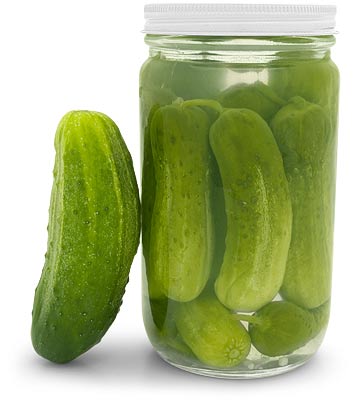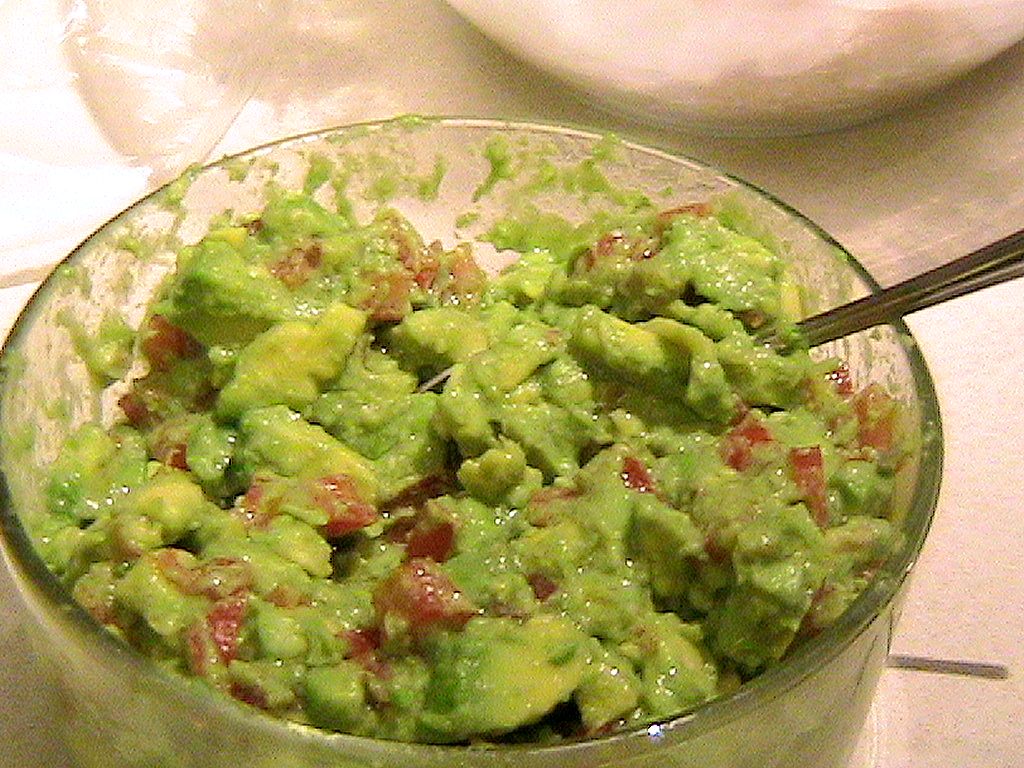It’s National Pickle Day and National Guacamole Day. I suppose since ‘being green’ is the new buzzword phrase that everyone is throwing down- even computer software, which makes me think ‘What the heck is ‘green’ software?’- naturally having a green food day is apropos.
 Think pickles and you think cucumbers, you don’t think ‘process’ but pickling is a process and not a food. It’s like saying ‘I need a Kleenex’. Kleenex is a brand, but what you want is a tissue. I know that I’m just comparing apples to oranges and y’all really don’t need to be told this; pickles have undergone that etymology that now means a crisp briny cucumber, not a process of preservation and pickles have become much more mainstream as well. There are companies who produce artisan pickles out of a wide variety of vegetables, honing the art with a fine tooth comb and creating an new legion of fans to all things vinegar. It’s not just about sauerkraut anymore.
Think pickles and you think cucumbers, you don’t think ‘process’ but pickling is a process and not a food. It’s like saying ‘I need a Kleenex’. Kleenex is a brand, but what you want is a tissue. I know that I’m just comparing apples to oranges and y’all really don’t need to be told this; pickles have undergone that etymology that now means a crisp briny cucumber, not a process of preservation and pickles have become much more mainstream as well. There are companies who produce artisan pickles out of a wide variety of vegetables, honing the art with a fine tooth comb and creating an new legion of fans to all things vinegar. It’s not just about sauerkraut anymore.
Pickling has been around for 5,000 years and differs from canning in that it does not require the item to be completely sterile before it is sealed. The distinguishing feature of pickling is to produce a pH that is low enough to kill of bacteria; natural fermentation at room temperature, provided by lactic acid bacteria produces this required level. The presence of acid or saline, along with the deprivation of oxygen brings the desired end result. These days, with refrigeration, this means of preservation isn’t as much a necessity as it is a pleasure; people love pickles of any kind. Asian cuisine is renowned for pickled items, most notably kimchi and umeboshi, in Britain you find pickled eggs and onions in many pubs as a snack food, herring is pickled in Scandinavia and we’ve already mentioned sauerkraut. Italian Giardiniera is a very popular dish of pickled vegetables including onions, carrots, celery and cauliflower. Middle Eastern countries serve pickles at almost every meal and of course, in the USA we have pickles galore of every kind, shape, and size- sweet, dill, hot and either crispy or soft; they’re sliced, quartered, whole in all sizes from the tiny cornichons to the gigantic sized pickles on a stick. Olives are pickles, or simply pickled. Okra is a popular pickled item in the South and pickled peppers are found from Italian to Mexican cuisine. Pickling can be considered a dry cure too, such as corned beef, pastrami, lox or even ham.
Had enough of pickles? I’m not a huge fan of them although olives tend to make me weak-kneed; my pickles need to be so crisp that they snap when you bite them and although I can eat the sweet bread-and-butter pickle slices on hamburgers, I prefer dill pickle relish on my bratwurst and fuggedabout sauerkraut. Just fuggedabottit.
On the other hand, guacamole is something I could eat every day.
I love a chunkier guacamole as opposed to the smooth version. Traditional Mexican standard ingredients include avocados, minced tomatoes and white onions, plenty of cilantro, lime juice, garlic and salt. Made it in a molcajete or just stirred together in a bowl, it goes with your burrito, taco, enchilada, taquito, chalupa, chimichanga, corn chip or simply on a spoon.
This is how I like to make it: Split three avocadoes and carve into a dice, scooping the flesh into a bowl. Add one seeded and diced tomato, lime zest and juice from half a lime, a rounded teaspoon of kosher salt, half a teaspoon each of cumin and chili powder and a few shakes of garlic and onion powder. I don’t add raw onion or garlic- too strong. Stir to combine and allow to sit for 10 minutes or so before serving.
Enjoy the green today!


Ok – I thought you were going to say that you put pickles in your guac! LOL. That’d be not so tasty.
OK, why should pickles have to share their day with guacamole? Doesn’t guac already get enough attention? 😉